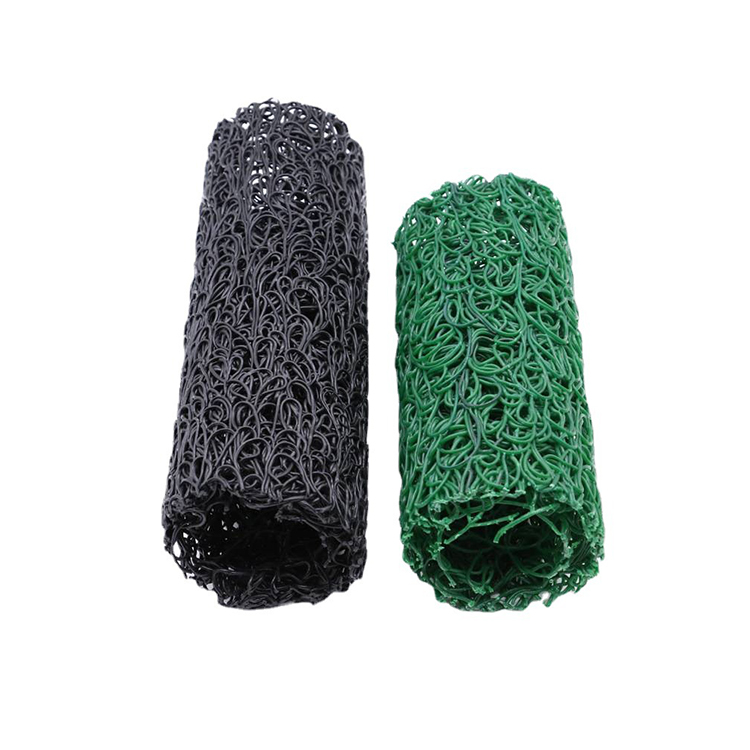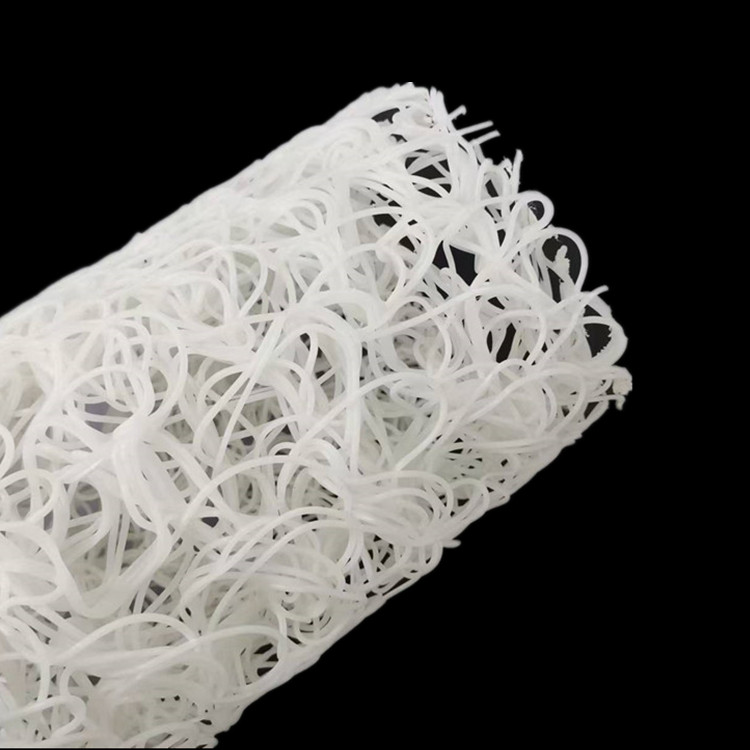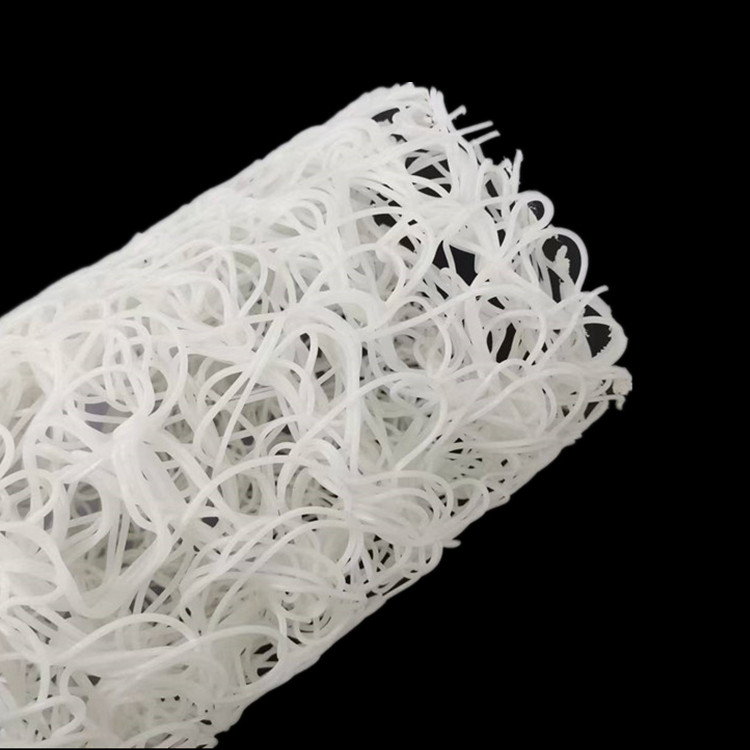Blind Drainage Ditch
1.High compressive strength,good pressure resistance.
2.High surface porosity,good water collection and drainage.
3.Long service life.
4.Selectivity of the filter membrane.
When surface water refuses to drain and soggy lawns, flooded basements, or waterlogged foundations become a recurring nightmare, it's time to consider an underground hero—the blind drainage ditch.
A blind drainage ditch is an invisible yet highly effective solution that redirects excess groundwater without the need for open trenches. Whether you're a homeowner tired of puddles or a landscape contractor designing for large-scale runoff control, this system is worth serious consideration.
?️ What Is a Blind Drainage Ditch?
A blind drainage ditch—also known as a French drain without a pipe—is a gravel-filled trench designed to collect and divert groundwater. Unlike traditional open drains or visible grates, the blind drainage ditch is typically covered with soil or turf, making it an aesthetic and functional component of your property’s drainage infrastructure.
Instead of channeling surface water alone, this system allows subsurface water to seep into the gravel-filled trench, where it is naturally redirected away from structures, gardens, or driveways.
✅ Key Benefits of a Blind Drainage Ditch
1. Invisible Installation
The ditch disappears once covered with soil or turf, preserving your landscape’s clean look—perfect for residential gardens, sports fields, and commercial lawns.
2. Low Maintenance
No grates to clean or open pipes to clog. The blind drainage ditch is virtually self-sustaining when properly designed.
3. Long-Term Water Control
It effectively reduces soil saturation, helps prevent erosion, and stops basement leaks and foundation damage caused by standing water.
4. Cost-Effective Alternative
Compared to complex drain tile systems, a blind drainage ditch is affordable, requiring only gravel, a filter fabric layer, and basic excavation.
5. Environmentally Friendly
By using natural materials and passive gravity drainage, it minimizes ecological disruption and energy use.
? Real-Life Applications
? Residential Yards – Eliminate water pooling near patios and foundations.
?️ Construction Sites – Maintain safe, dry footing zones during rainy seasons.
? Parks & Gardens – Prevent root rot in plant beds and soggy grass patches.
⛳ Golf Courses & Athletic Fields – Subsurface drainage without disrupting play.
?️ Rural Properties – Channel water away from barns, driveways, and septic areas.
?️ How to Build a Blind Drainage Ditch
Plan the Path
Identify the slope and water flow direction. Ensure the ditch leads water away from structures or sensitive areas.Excavate the Trench
Dig a trench approximately 6–18 inches deep and 6–12 inches wide, depending on expected water volume.Add Filter Fabric
Line the trench with nonwoven geotextile fabric to prevent soil infiltration into the gravel.Fill with Gravel
Use angular crushed stone (typically 3/4 inch) for optimal drainage. Fill to within 1–2 inches of the surface.Cover and Conceal
Fold the fabric over the top layer of gravel, then backfill with soil or turf to hide the ditch completely.
? Pro Tip: For heavier water flow or clay-heavy soils, consider adding a perforated drain pipe within the trench for added capacity.
? User Reviews & Community Feedback
⭐⭐⭐⭐⭐
“Our backyard was unusable after every storm. After installing a blind drainage ditch, the lawn stays dry—even after heavy rain. You can’t even tell it’s there!”
— Karen T., Austin, TX
⭐⭐⭐⭐⭐
“I installed a blind drainage ditch around our barn. It saved us thousands in potential flooding damage. Definitely worth the weekend project!”
— Jim R., Ohio
⭐⭐⭐⭐
“Easy DIY installation, though I wish I had rented a trencher. Great results, though—water doesn’t collect anymore.”
— Dylan P., Portland, OR
? Common Questions About Blind Drainage Ditches
Q1: Do I need a permit to install a blind drainage ditch?
A: In most residential areas, no permit is needed. However, always call local utilities before you dig.
Q2: Will a blind drainage ditch work in clay soil?
A: Yes, though performance improves when combined with a perforated drain pipe.
Q3: How long does it last?
A: Properly built ditches with geotextile fabric can last 20–30 years without major maintenance.
? Your Turn: Join the Conversation!
Have you installed a blind drainage ditch on your property? What challenges did you face—or what unexpected benefits have you discovered?
? Comment below and share your story. Let’s help other homeowners and builders make informed decisions!
? Where to Buy Materials for a Blind Drainage Ditch
You can purchase everything you need for a blind drainage ditch from your local home improvement store or online through platforms like:
Home Depot
Lowe’s
Menards
Amazon
Specialty landscaping suppliers
Look for:
Washed gravel or crushed stone
Nonwoven geotextile filter fabric
Optional: perforated drainage pipe for hybrid systems
For contractors or bulk buyers, wholesale geosynthetic suppliers can provide volume pricing and custom sizing.
? Final Thoughts
A blind drainage ditch may not be visible, but its impact is undeniable. With proper planning and installation, it’s one of the simplest and most effective ways to control groundwater, prevent erosion, and keep your landscape healthy and dry.
Whether you're a weekend DIYer or a professional landscaper, adding a blind drainage ditch to your toolkit ensures you’re ready to handle even the heaviest downpour.
Benefits of a Blind Drainage Ditch
Prevents Water Accumulation – Helps eliminate standing water in yards, agricultural fields, and construction sites.
Reduces Soil Erosion – Minimizes surface runoff, preventing erosion and soil degradation.
Enhances Aesthetics – Unlike open ditches, a blind drain is covered, blending seamlessly into the landscape.
Improves Soil Drainage – Allows excess water to percolate through layers of gravel and pipe systems, keeping the soil well-drained.
Increases Land Usability – Makes land more functional for farming, landscaping, or construction without hindering movement.
How to Install a Blind Drainage Ditch
Determine the Drainage Path
Identify the lowest points where water accumulates and create a plan for directing water to an appropriate outlet.
Excavate a Trench
Dig a trench approximately 12–24 inches deep and 6–12 inches wide, depending on the expected water volume.
Add a Permeable Lining
Line the trench with geotextile fabric to prevent soil from clogging the drainage material.
Install Gravel and Drain Pipe (Optional)
Fill the bottom with coarse gravel and optionally place a perforated drain pipe for enhanced water flow.
Cover with More Gravel and Soil
Add a layer of fine gravel, then cover with sand or soil to maintain a level surface.
Compact and Finish
Lightly compact the surface to ensure stability and seamless integration with the surrounding landscape.
Common Uses of Blind Drainage Ditches
Agriculture – Prevents waterlogging in crop fields.
Residential Yards – Manages excess rainwater to protect lawns and foundations.
Roadside Drainage – Prevents water accumulation that can lead to pavement damage.
Construction Sites – Helps control water flow to maintain dry working conditions.









